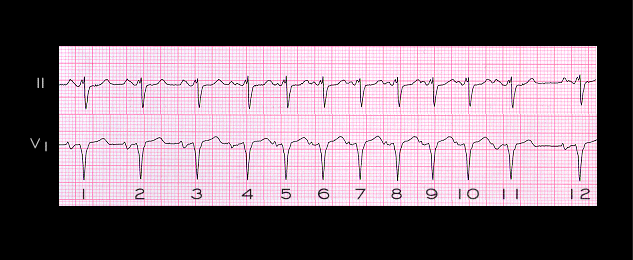
Ectopic atrial tachycardia may also by intermittent or non-sustained. This ECG is an example of a non-sustained ectopic atrial tachycardia recorded from a 75 year old male who was receiving digitalis as part of his management for congestive heart failure. Beats 1, 2 and 3 are sinus beats. The P wave in beat 4 is premature and its form is intermediate between the P waves in beats 3 and 5 and may be a fusion of the sinus and the ectopic P waves. Beats 5-10 are a run of ectopic atrial tachycardia. Note that the P-P nterval progressively shortens in beats 6-9 and then lengthens just prior to its spontaneous termination with beat 11. Beat 12 is a sinus beat. The speeding of the ectopic rate (shortening of the P-P interval) after its onset and its slowing just prior to its offset suggest that this arrhythmia is more likely due to enhanced automaticity than to reentry.
